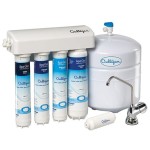How To Wash Clothing In The Sink: A Comprehensive Guide
Washing clothing in a sink, although often perceived as a method reserved for travel or emergencies, can be a practical and efficient solution in various scenarios. This method allows for targeted cleaning of delicate items, reduces water and energy consumption compared to machine washing for small loads, and provides a viable alternative when access to a washing machine is limited. This article provides a comprehensive guide to washing clothing effectively and efficiently in a sink, covering essential materials, techniques, and considerations.
The advantages of sink washing extend beyond mere convenience. It offers greater control over water temperature and detergent concentration, minimizing the risk of damage or shrinkage to sensitive fabrics. Furthermore, it is an economical option for cleaning items that require special care or are only worn occasionally. Understanding the principles and practices outlined in this guide will empower individuals to maintain their wardrobe effectively, regardless of their access to conventional laundry facilities.
Preparation and Essential Materials
Before commencing the washing process, it is crucial to gather the necessary materials and prepare the workspace. A clean sink is paramount to prevent contamination of the clothing with dirt or residue. The ideal sink should be large enough to accommodate the garments being washed and made of a non-reactive material such as stainless steel or porcelain. Avoid using sinks with heavily stained or chipped surfaces, as these can transfer unwanted marks to the fabric.
Detergent selection is a critical factor in achieving optimal cleaning results. A mild, pH-neutral detergent formulated for delicate fabrics is generally recommended. Harsh detergents containing bleach or enzymes can damage sensitive fibers and potentially cause discoloration. Liquid detergents are often preferred over powdered varieties, as they dissolve more readily in water and minimize the risk of residue buildup. It is imperative to carefully read the care label on each garment to determine the appropriate detergent type and washing instructions.
In addition to detergent, a clean towel is essential for blotting excess water from the washed garments. A second, dry towel can be used to roll the garment and further expedite the drying process. A clothesline or drying rack positioned in a well-ventilated area is also required for air-drying the clothing. Avoid drying clothing in direct sunlight, as this can cause fading and damage to certain fabrics. For delicates such as lingerie or silk, a mesh laundry bag can provide added protection during the washing and rinsing stages.
Finally, consider the water temperature. Lukewarm water is generally suitable for most fabrics, while cold water is preferred for delicate items or garments prone to shrinking. Hot water should be avoided unless specifically recommended on the care label, as it can damage certain fibers and cause colors to bleed. A thermometer can be used to ensure accurate water temperature control.
The Washing Process: Step-by-Step Instructions
The sink washing process can be broken down into several distinct steps, each contributing to the effective cleaning and preservation of the garment. The initial step involves filling the sink with the appropriate amount of water at the correct temperature. The water level should be sufficient to fully submerge the clothing without overflowing the sink.
Next, add the detergent to the water, following the manufacturer's instructions for dosage. Gently agitate the water to ensure the detergent is evenly distributed and thoroughly dissolved. Avoid adding excessive amounts of detergent, as this can leave residue on the clothing and require more extensive rinsing. Overuse of detergent does not necessarily translate to cleaner clothes; it may even have the opposite effect.
Before immersing the clothing in the soapy water, carefully inspect it for any visible stains or blemishes. Pre-treat these areas with a small amount of detergent or a stain remover specifically designed for the fabric type. Gently rub the detergent into the stain using a soft cloth or sponge, taking care not to damage the surrounding fibers.
Submerge the clothing in the soapy water, ensuring it is fully immersed. Gently agitate the garment by hand, using a squeezing and releasing motion to allow the detergent to penetrate the fibers. Avoid harsh scrubbing or twisting, as this can damage the fabric and cause distortion. Allow the clothing to soak in the soapy water for approximately 15-30 minutes, depending on the level of soiling.
After the soaking period, drain the soapy water from the sink and rinse the clothing thoroughly with clean, cool water. Continue rinsing until all traces of detergent are removed and the water runs clear. Gently squeeze the garment to remove excess water between rinses. It is crucial to eliminate all detergent residue to prevent skin irritation or fabric stiffness.
Drying Techniques and Post-Wash Care
Proper drying is as important as the washing process in maintaining the quality and longevity of clothing. Avoid wringing the garment excessively, as this can damage the fibers and cause stretching or distortion. Instead, gently squeeze out excess water or blot the garment with a clean towel.
For delicate items such as lingerie or silk, consider rolling the garment in a clean, dry towel to absorb excess moisture. This method is less abrasive than squeezing and helps to preserve the shape and texture of the fabric. Press down firmly on the towel-wrapped garment to maximize water absorption.
Air-drying is the preferred method for most clothing washed in the sink. Hang the garment on a clothesline or drying rack in a well-ventilated area, away from direct sunlight and heat sources. Direct sunlight can cause fading and damage to certain fabrics, while heat can lead to shrinkage or distortion. Ensure the garment is hanging evenly to prevent uneven stretching.
For items that are prone to stretching, such as sweaters or knitwear, consider drying them flat on a clean, dry surface. This method helps to maintain the garment's shape and prevent sagging. Place the garment on a towel or mesh drying rack to allow for adequate air circulation. Turn the garment periodically to ensure even drying.
Once the clothing is completely dry, it can be ironed or steamed to remove any wrinkles. Always check the care label for specific ironing instructions. Some fabrics, such as silk or linen, require ironing at a low temperature setting to prevent damage. Use a pressing cloth to protect delicate fabrics from direct contact with the iron.
Proper storage is essential for preserving the quality of clean clothing. Store garments in a clean, dry environment, away from direct sunlight and moisture. Use hangers or fold clothing neatly to prevent wrinkles and distortion. For delicate items, consider storing them in garment bags to protect them from dust and damage.
By following these detailed instructions, individuals can effectively and efficiently wash clothing in the sink, ensuring the cleanliness and longevity of their garments. This method provides a versatile and economical alternative to machine washing, particularly for delicate items or small loads.
Rick Steves How To Wash Clothes In The Sink While Traveling

How To Do Laundry In Your Sink By Hand And Dry Em Fast
Rick Steves How To Wash Clothes In The Sink While Traveling

How To Do Laundry The New York Times

A Step By Guide On How To Hand Wash Clothes

Travel Laundry How To Hand Wash Clothes In A Sink Wanderbig Com

How To Hand Wash Clothes 7 Easy Steps For All Types Of Clothing

Can One Wash Impure Clothing In A Sink Filled With Water

How To Hand Wash Clothes Laundry Tips Downy

Hand Washing Clothes In The Sink Tips And Tricks For Laundry Day







